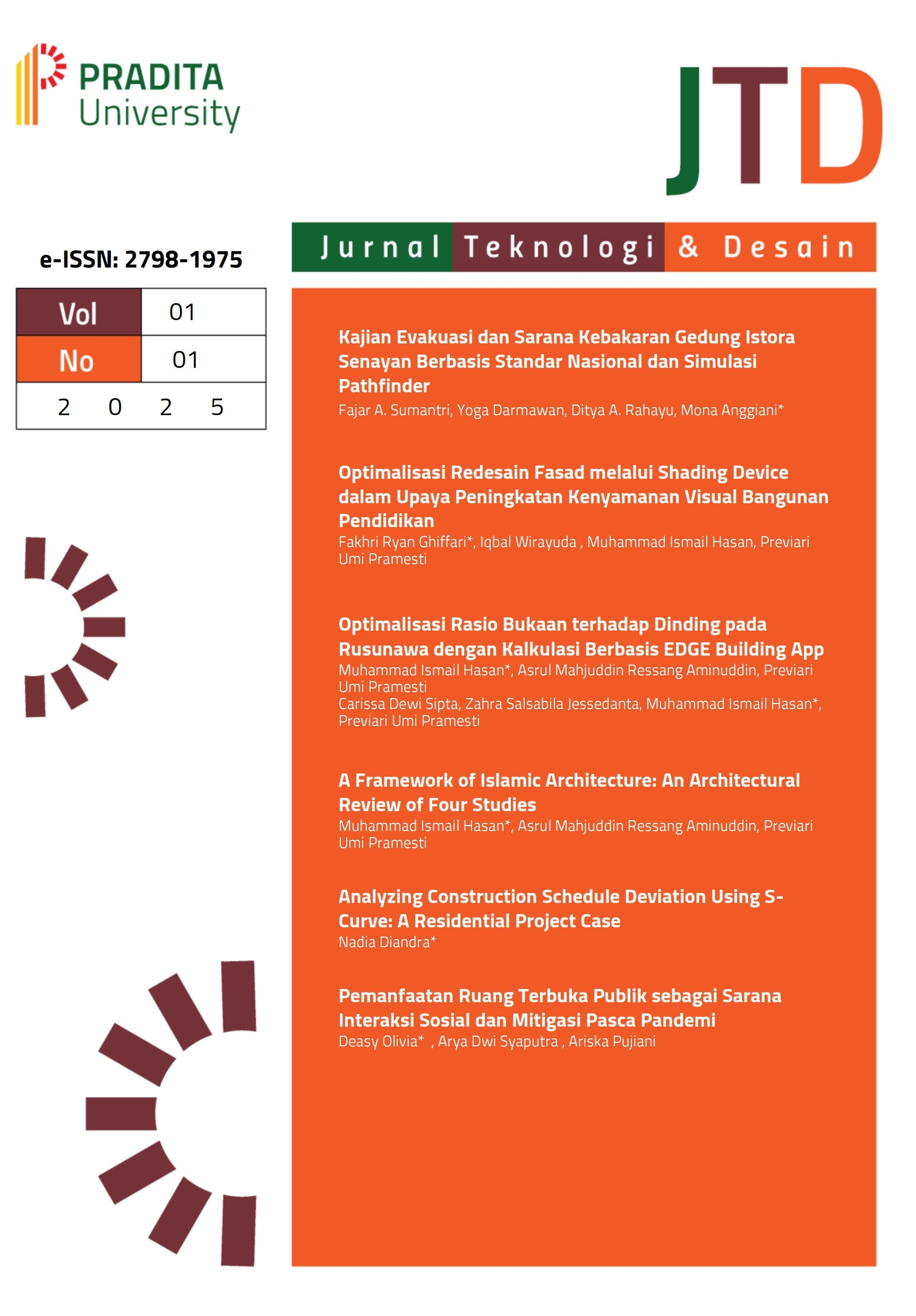Archives
-

Jurnal Teknologi dan Desain
Vol. 1 No. 02 (2025)This issue presents a collection of studies exploring various aspects of architectural design, ergonomics, and spatial comfort within urban and commercial contexts. The opening article examines the typomorphology of shophouse facades along Jalan Kemenangan Tiga, Glodok, analyzing the visual and architectural character of a heritage area. The next study discusses the design of elderly-friendly streets in Purwokerto, aiming to encourage walking activity among senior citizens. The third paper presents an ergonomic study in the trader’s area of Semat Sari Market, Tibuneneng Village, assessing how workspace design aligns with user activities. Another article explores the development of user perspectives in design decision-making, highlighting the evolving paradigms within creative design processes. A bibliometric analysis on thermal comfort research in apartment housing provides insights into research trends and developments in this field. The final paper offers an analysis of shelf and display layouts at Papaya Fresh Gallery, evaluating how interior retail design enhances the shopping experience. Overall, this edition reflects the integration of functionality, aesthetics, and comfort within contemporary design and technology practices.
-

Jurnal Teknologi dan Desain
Vol. 1 No. 01 (2025)This issue of JTD (Jurnal teknologi dan Desain) Vol.1, No.1, 2025 presents a diverse collection of six articles exploring architectural, civil engineering, and urban planning perspectives across Indonesia. The first article deals with the evacuation and fire facilities of Istora Senayan Building based on the Pathfinder simulation. The second article focuses on facade redesign through shading devices to improve visual comfort in educational buildings. The third article deals with the ratio of openings to walls in Rusunawa. Meanwhile, the fourth article is a literature on 4 Islamic architecture studies. The fifth article deals with analyzing construction schedule deviation using S-curve. The last article focuses on the utilization of public open space as a means of social interaction and post-pandemic mitigation.





